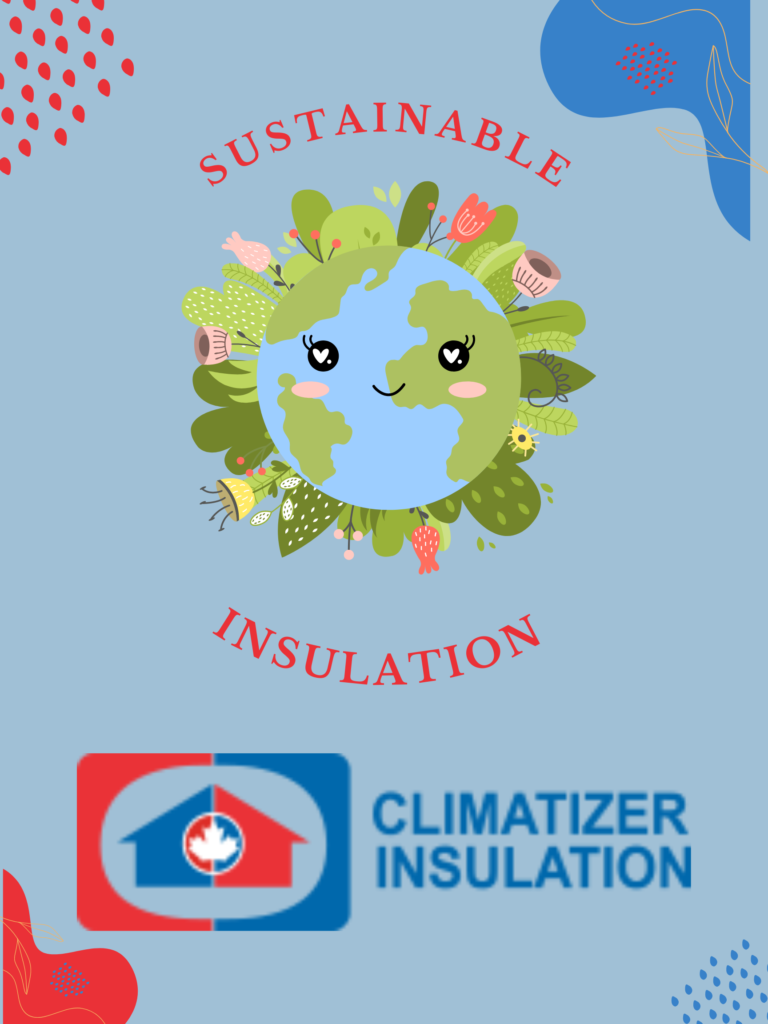Climatizer Insulation is Now Offering Curbside Pickup. Learn More Here
Sustainable Insulation in the Fight Against Climate Change
Climate change is real and humans are a part of it. In response, industries across the globe are looking for innovative ways to reduce their carbon footprint. And the construction industry has a significant role to play in this fight. How? Well, the construction and maintenance of buildings are responsible for almost 40% of global carbon emissions! As a result, the use of sustainable building materials grows in importance each year. Therefore insulation plays a key role, and one of the materials in this fight is cellulose insulation.
This article will explore the importance of sustainable insulation solutions, specifically cellulose insulation, in the fight against climate change. You’ll learn why we choose cellulose at Climatizer Insulation, and how you can join the insulation revolution!
Sustainable Insulation: An Introduction to the Environmental Benefits
Sustainable insulation solutions, particularly cellulose insulation, have a significant role to play in the fight against climate change. Unlike other insulation types, cellulose insulation is made from recycled materials. Often it consists of recycled papers, though sometimes denim! The insulation is created by processing the recycled paper, removing the ink and other unwanted materials and treating it with fire-retardant chemicals.
The benefits of cellulose insulation are many. Here are some of the ways cellulose insulation can benefit the environment:
- Reduced greenhouse gas emissions: The manufacturing process of cellulose insulation produces far fewer greenhouse gases than other insulation types. The reduced carbon footprint of cellulose insulation makes it a smart choice for environmentally conscious businesses!
- Reduced waste: The use of recycled paper to manufacture cellulose insulation reduces the amount of waste that would otherwise go to landfills.
- Energy efficiency: Cellulose insulation provides excellent insulation that can help businesses reduce their energy usage and costs.
Overall, cellulose insulation is smart for businesses looking to reduce their environmental impact. By adopting sustainable insulation solutions, we can contribute to the fight against climate change while promoting energy efficiency and sustainability!
The Environmental Impact of Traditional Insulation Materials
Traditional insulation materials are widely used in the construction industry. However, their production and installation have significant environmental impacts. The production of fibreglass and foam insulation materials requires large amounts of energy. Furthermore, the manufacturing process releases harmful greenhouse gases. Lastly, fibreglass insulation may contain formaldehyde, a known carcinogen.
Unfortunately, traditional insulation materials are not biodegradable, so they do not break down naturally in the environment. When disposed of improperly, they contribute to landfills, pollution and damage to the environment.
These environmental impacts highlight the need for more sustainable insulation solutions, such as cellulose insulation. Not only does cellulose insulation have a lower environmental impact during production, but it also performs as well or better than traditional materials.
Sustainable Insulation Materials: A Comparison
When it comes to insulation materials, not all are created equal. In fact, some are far more sustainable than others. Here, we’ll take a closer look at some of the most popular insulation materials on the market today and compare them to cellulose insulation, a highly sustainable option.
- Fibreglass: This widely used insulation material is made from glass fibres and has a lower R-value per inch than cellulose insulation. It also poses significant health hazards when inhaled during installation.
- Spray Foam: Although spray foam insulation is highly effective in sealing cracks and gaps, it is not a sustainable option. It comes from petroleum-based products and releases harmful VOCs into the air during installation.
- Mineral Wool: Mineral wool insulation is made from natural rock or recycled slag, and has a higher R-value per inch than cellulose insulation. However, the manufacturing process requires large amounts of energy and produces significant greenhouse gas emissions.
- Cellulose: Made from recycled materials such as newspaper and treated with borate, cellulose insulation is highly sustainable and has a higher R-value per inch than fibreglass. It is also free of harmful chemicals and poses no health hazards during installation.
As you can see, when it comes to insulation materials, cellulose is a clear winner in terms of sustainability and effectiveness. If you’re looking for more information comparing different insulation materials, check out our guide here. It goes into detail about the energy efficiency of cellulose. For more information on cellulose and sustainability, keep reading!
The Role of Insulation in Achieving Net-Zero Energy Buildings
As the world moves towards net-zero energy buildings, insulation plays an increasingly important role. Insulation companies are at the forefront of this shift. That’s because we manufacture materials that can help reduce the energy consumption of buildings!
Cellulose insulation is becoming an increasingly popular choice for industry professionals looking to achieve net-zero energy buildings. As a leader in cellulose insulation manufacturing, Climatizer Insulation plays a vital role in helping industry professionals meet their sustainability targets.
Cellulose insulation is highly effective at reducing energy consumption. By using cellulose insulation in residential and commercial buildings, industry professionals can help reduce greenhouse gas emissions and fight climate change.
At Climatizer Insulation, we commit to manufacturing high-quality cellulose insulation that meets the needs of industry professionals. As a result, our insulation uses sustainable manufacturing practices. As such, we are constantly innovating to find new ways to reduce our environmental impact. By choosing our cellulose insulation, you can be confident that you are making a sustainable choice.
Get Your Sustainable Insulation at Climatizer Insulation
Climatizer Insulation is at the forefront of the sustainable insulation movement, focusing on cellulose insulation. We commit to manufacturing high-quality insulation materials that are not only effective but also eco-friendly. Our cellulose insulation comes from recycled paper products, reducing the need for new materials and diverting waste from landfills.
Overall, our commitment to sustainable manufacturing and cellulose insulation provides a significant opportunity for industry professionals to play a role in the fight against climate change. With suitable insulation materials and techniques, achieving net-zero energy buildings is not only possible but also financially feasible.





